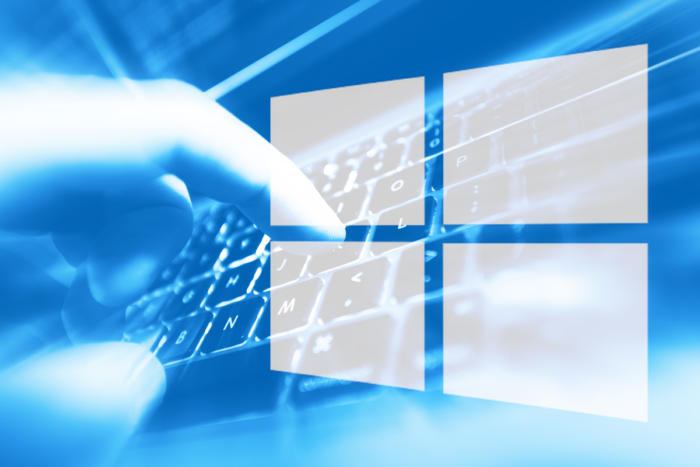Microsoft is making changes to the way it will be rolling out feature updates for Windows 10 starting with the 19H1/1903 release, which is now officially known as the “May 2019 Update.” Here’s what’s new.
Microsoft is continuing to tweak how the Windows 10 update process works. The company is initiating a number of changes, kicking off with the rollout of the Windows 10 19H1/1903 update.
Unlike the case with previous twice-yearly Windows 10 feature updates, the next feature update, known as 19H1/1903, is getting several additional weeks of testing time in the Windows Insider Release Preview ring before rolling out to the mainstream.
Next week, Microsoft will make Windows 10 19H1 available to Release Preview testers. It will also get a round of additional broader testing among employees at Microsoft, along with Microsoft’s OEM and ISV partners. After these groups have a chance to bang on it for the rest of April, Microsoft plans to begin rolling it out to the mainstream some time in “late” May, according to Microsoft’s April 4 blog post about its new update experience plans. As it has been doing recently, Microsoft will roll out the 19H1/1903 update gradually, providing it to devices where data indicates the update will have the fewest issues first.
Business customers will be able to start testing the commercially-available 19H1/1903 update internally in late May, and Microsoft will use the late May date when it begins rollout as the start of the 18-month support period for Windows 10 1903. Microsoft officials said the May 2019 Update will be available in late May through Windows Server Update Services (WSUS), Windows Update for Business, the Volume Licensing Service Center and for deployment using Systems Center Configuration Manager and/or other systems-management software.
Even though Windows 10 19H1/1903 Build 18362 was completed in March 2019, (hence the “1903” designation), Microsoft is going to use “May 2019 Update” as its marketing name. It will still officially also be known as 1903, and its server complement will be called Windows Server 1903. Up until now, we’d all assumed Windows 10 19H1/1903 would be called the April 2019 update as we thought Microsoft would begin rolling it out to mainstream users in April, as it had done previously with other Windows 10 feature updates.
Microsoft is also going to enable users — particularly those using Windows 10 Home — to have more control over when and how they get both security and feature updates for Windows 10 starting with the May 2019 Update.
As rumored earlier this year, Microsoft will enable Windows 10 Home users to pause feature updates for up to 35 days. They will be able to do this in increments of seven days, five times. Up until now, Home users only had the option of choosing a time to install or “snoozing” updates. (Windows 10 Pro, Enterprise and Education users already had the option to pause updates.) There also will be a 35-day pause window for all security updates.
Microsoft is also adding to its Windows Update settings a new “download and install now” option for twice-yearly feature updates. That way, if customers use Windows Update to check for any kind of available update, they won’t automatically be pushed to do a feature update just by the virtue of “seeking.” Starting in late May, Microsoft plans to add the new “download and install” option to Windows 10 1803, 1809, 1903 and all future Windows 10 feature updates.
Update: This wasn’t clear to me from reading Microsoft’s blog post, but if you choose to download and install a feature update, you are locked in. You can pause it for up to 35 days, but that’s it. If you don’t click download and install, you don’t have to install a given feature update as long as the version of Windows 10 that you are running is within (and not too close to the end) of its given Microsoft support window. (Thanks to Windows Central’s @zacbowden for the clarification and a Microsoft spokesperson for confirming this interpretation is correct.)
There’s only one exception to Microsoft’s new, less-pushy update policy. If customers are running a variant of Windows 10 that is close to its end-of-support date, “Windows will automatically initiate a new feature update.” (I’m not sure how “close” a user has to be to end of support for this to happen, but Microsoft says users will get some kind of notifications for some period of time before this occurs.)
There are some additional changes Microsoft is making in the name of stability and quality to its Windows 10 feature update process which are detailed in its April 4 blog post.
It sounds like these procedures will be the new normal for Windows 10 feature updates. Microsoft should begin testing Windows 10 19H2 builds with its Insider testers any day now. As I noted previously, I believe 19H2 will be built a bit differently than other Windows 10 feature updates because of scheduling issues between the Azure and Windows engineering teams.
Microsoft officials made these changes to the update and testing process for Windows 10 after the most recent Windows 10 feature release, the October 2018 update/1809, was beset with problems. Microsoft kicked off the rollout of the October update in early October without a final Release Preview testing pass and had to pause it due to various bugs and issues. It was only late last week that Microsoft designated the October update/1809 as being ready for broad deployment by business users.
This article originally appeared on ZDNet.

